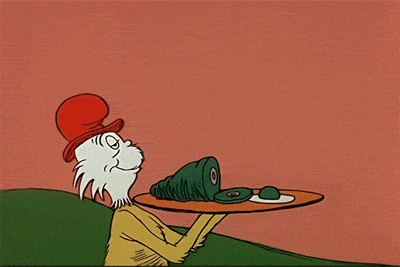Fiddling with Fluency

Rationale: This lesson is designed to improve student’s reading fluency in unfamiliar or difficult texts. Students usually begin reading at a slow pace but as they learn, they are able to read at a faster pace. Fluency is described as the ability to read with speed, accuracy, and proper expression. To become fluent readers, students must first decode a text. In this lesson, they will learn about the strategies and skills that it takes to become a fluent reader by rereading “Green Eggs and Ham” by Dr. Suess. They will read silently and then in pairs. They will also work with the teacher on unfamiliar words. The goal of this lesson is to gain fluency in independent reading.
Materials:
-
Class set of “Green Eggs and Ham” by Dr. Suess
-
One stopwatch per group
-
Cover-up critters for each student
-
Whiteboards and expo markers
-
Pencils
-
Reading fluency checklist
Procedure:
-
Say: Good morning class, today we are going to learn how to be fluent readers. Does anyone know what is means to be a fluent reader? *wait for student responses* Those are some good answers. Being a fluent reader means that you recognize words automatically and read very quickly and smoothly. Why do you all think it is important to be a fluent reader? *wait for student responses* Being a fluent reader helps us to comprehend what we read. This means that once we read a sentence, we know exactly what we are reading. It also helps us read aloud with emotion.
-
Say: When we are reading an unfamiliar book, sometimes we come across words that we do not know. For example, let’s pretend that I come across the word plan. *write the word plan on whiteboard* The first thing I would do is decode the word using my cover-up critter. *model decoding* The first letter is p. /p/…/p/…/p/. The next letter is l. /l/…/l/…/l/. Next is the letter a. /a/…/a/…/a/. Lastly, we have the letter n. /n/…/n/…/n/. Now let’s put it all together. /p/…/l/…/a/…/n/…./plan/. So, our word is plan. Let’s use it in a sentence. I plan on going to the park tomorrow.
-
Say: Now let’s see the difference between a fluent reader and a non-fluent reader. We are going to use the sentence I just said to see this difference. I ppplllaaannn ooonnn gggoooiiinnnggg tttooo ttthhheee pppaaarrrkkk tttooommmooorrrooowww. Now I will read it as a fluent reader. I plan on going to the park tomorrow. Can you all see a difference in fluent and non-fluent readers? *student responses*
-
Say: Now I want each of you to take out your copy of “Green Eggs and Ham” and read it silently at your desk. “Green Eggs and Ham” is about a man named Sam I Am. He wants everyone to try his green eggs and ham. Who is going to try Sam’s eggs? Will anyone try his eggs?!! Let’s find out.
-
Say: Now that you have all read the book by yourselves, I want you to pair up with a partner and take turns reading to each other. Each group needs to come up and get a stopwatch and fluency sheet. The person who isn’t reading will use the stopwatch to time the person who is reading. Record the time on your reading chart. You will each read the book three times and see how much you have improved. While you are reading just relax and do your best.
-
Say: You all did a great job, please bring your stopwatch, reading chart, and fluency sheet with your names on them to me.
-
Individually analyze the student’s work.
Reading Checklist:
Book Title: Green Eggs and Ham
Reader’s Name:
Listener’s Name:
Words x 60 / Seconds = WPM
First Reading WPM:
Second Reading WPM:
Third Reading WPM:
Fastest Reading:
Smoothest Reading:
Reading w/ Fewest Errors:
Reference:
“Fishing for Fluency” by Summer Rose
https://sdr0039.wixsite.com/my-site-1/growing-independence-and-fluency
“Green Eggs and Ham” by Dr. Seuss
https://www.chirpbooks.com/audiobooks/green-eggs-and-ham-by-dr-seuss